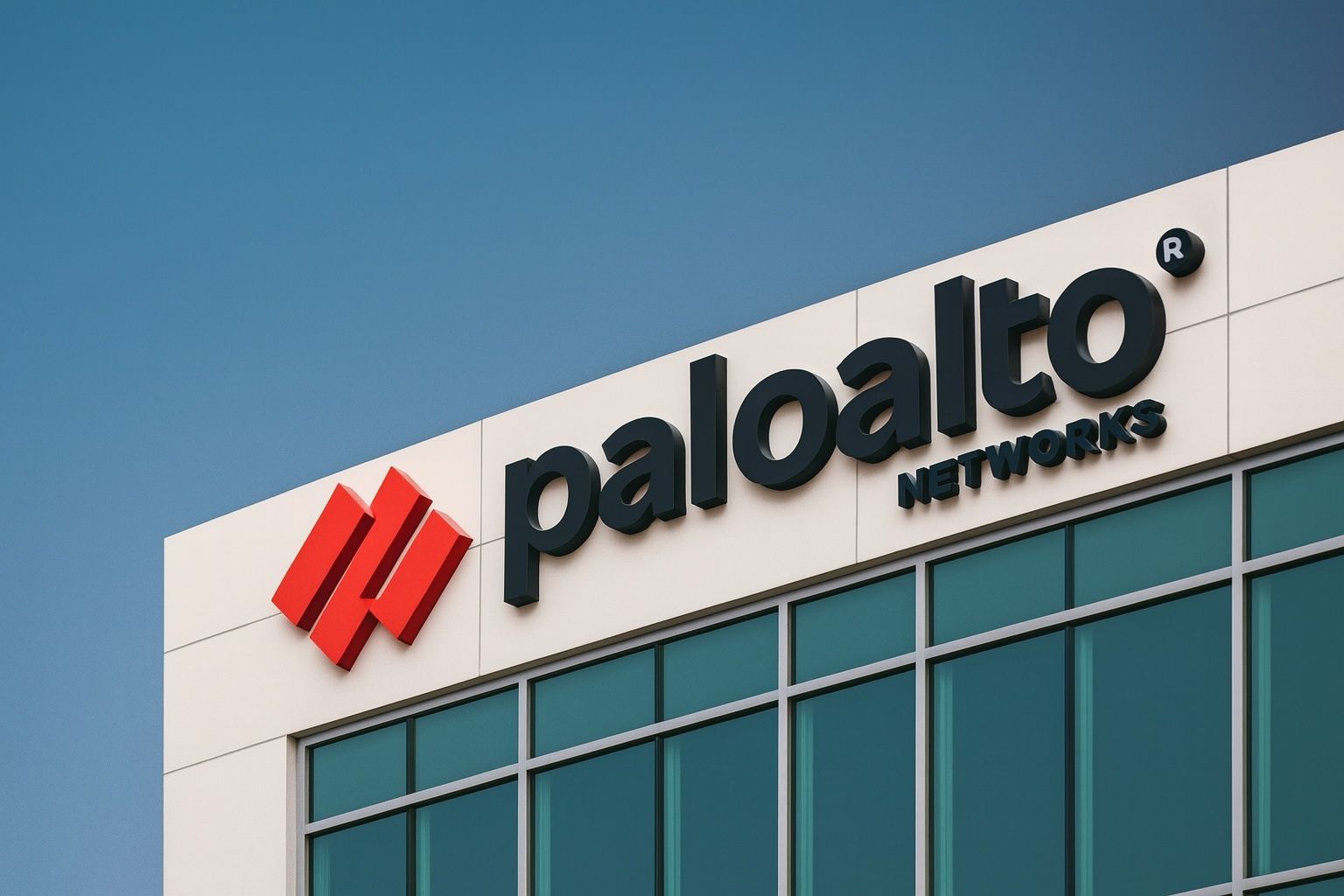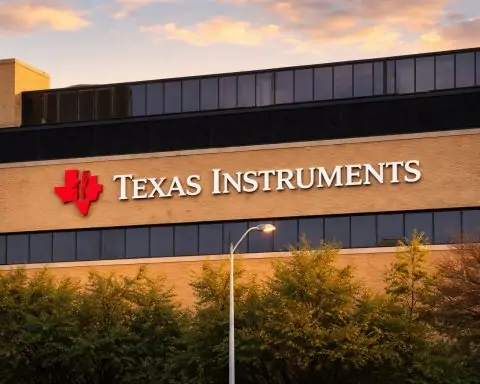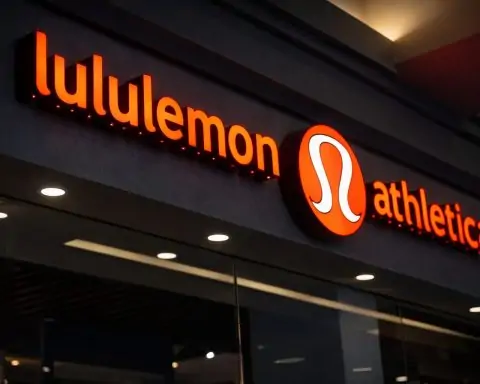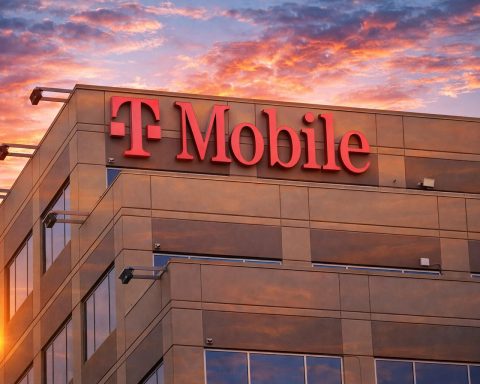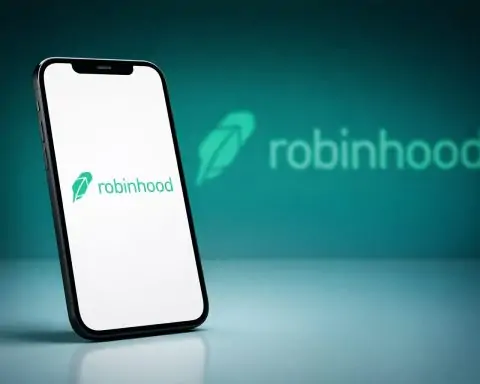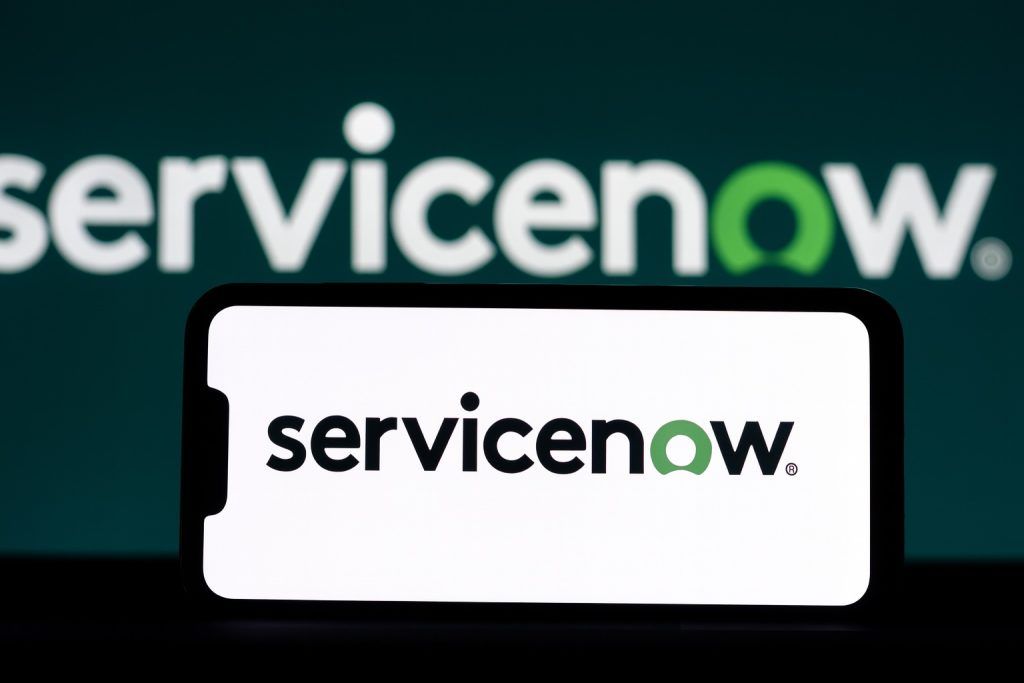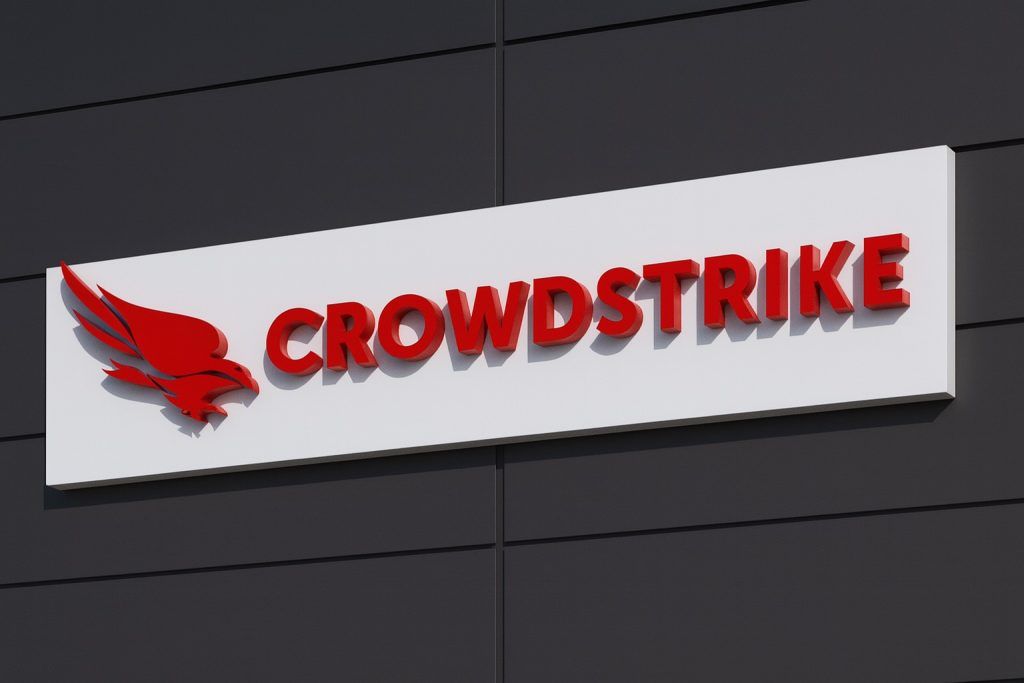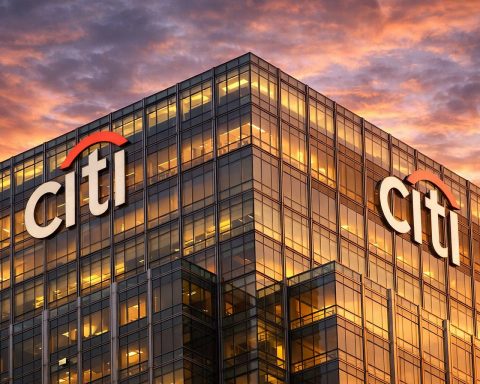What to Know Before Markets Open on October 20, 2025
- Surging Stock: Palo Alto Networks (NASDAQ: PANW) shares trade around $208 as of October 19, 2025 [1] – near their all-time high (~$216 reached earlier this month) [2]. The stock is up roughly 14% year-to-date [3], significantly outperforming the S&P 500, and sits at multi-month highs after a recent rally.
- Big AI & Identity Moves: In late July, Palo Alto announced a blockbuster $25 billion acquisition of CyberArk Software to expand into identity security [4]. The deal – coming amid an “AI arms race” in cyber threats [5] – initially sent PANW down ~8% on integration worries [6]. However, analysts praise its strategic merit, instantly making Palo Alto a one-stop platform spanning network, cloud, AI and identity protection [7]. CEO Nikesh Arora said the rise of AI and machine identities means “every identity requires the right level of privilege controls,” underscoring the rationale [8].
- Strong Earnings & Guidance: Palo Alto’s fiscal Q4 2025 (July quarter) delivered revenue of $2.50 B (+16% YoY) and non-GAAP EPS of $0.95 (+27% YoY), beating forecasts [9]. Next-generation ARR jumped 32% to $5.6 B and backlog (RPO) grew 24% to $15.8 B [10]. For FY2026, management guided ~14% revenue growth (to ~$10.5 B) with EPS $3.75–3.85 [11] [12] – above Street estimates – signaling confidence in robust demand. Palo Alto boasts high profitability (non-GAAP op margin ~30%, FCF margin ~40%) [13] and is one of the rare cybersecurity firms achieving the “Rule of 50” (growth + FCF margin ≥ 50%) five years running [14].
- Analysts Bullish: Wall Street is broadly bullish on PANW. ~40 analysts cover Palo Alto with the vast majority rating it “Buy/Strong Buy” [15]. The average 12-month price target is about $217 (≈5% above current levels) [16], though many have been hiking targets post-earnings. Wedbush now sees $225 and Tigress Financial $245 [17]. Just last week, BTIG upgraded PANW to “Buy” with a Street-high $248 target – citing stronger platform adoption and confidence in Palo Alto’s AI-driven strategy [18].
- Industry Tailwinds & Peers: Soaring cyber demand underpins Palo Alto’s momentum. Global cybersecurity spending is projected to rise ~12% in 2025 amid an onslaught of AI-driven attacks [19]. Enterprises are consolidating point products in favor of platforms – a trend Palo Alto benefits from with its end-to-end portfolio [20]. Rival stocks are also hot (e.g. CrowdStrike +40% YTD [21]), but many peers trade at loftier valuations (CrowdStrike ~124× forward earnings vs PANW’s ~50×) [22]. Palo Alto, now the world’s largest pure-play cybersecurity firm by revenue [23], balances high growth and profitability, giving it an edge over less profitable “growth-first” competitors [24].
Palo Alto Networks Rallies on Cyber Boom
Palo Alto Networks’ stock has been on fire in recent months, riding a wave of optimism around booming cybersecurity demand and artificial intelligence (AI). The stock currently hovers near record highs around $207–$210 per share [25], not far from its peak of ~$216 earlier in October [26]. Year-to-date PANW is up roughly 10–15% [27] – a strong performance driven by robust earnings and upbeat forecasts. By comparison, the Nasdaq is flat to slightly down on the year, highlighting Palo Alto’s status as a standout “cybersecurity winner.” The company’s market capitalization now sits around $140 billion [28], solidifying its position as the largest pure-play cybersecurity vendor globally [29].
Several factors have propelled the rally. First, investor appetite for AI-focused tech stocks has lifted sentiment across the cybersecurity sector. Palo Alto has been positioning itself at the forefront of “AI-powered” security, which traders have rewarded. Secondly, the company’s fundamentals support the hype – Palo Alto is delivering strong growth and profits, unlike many tech peers. Its forward price-to-earnings (~50×) is rich, but still below certain high-fliers like CrowdStrike (~124×) [30]. “Palo Alto’s ability to grow revenue double‑digits while maintaining high margins is a key competitive advantage,” notes one analysis, especially since even fast-growing rivals like CrowdStrike “are not yet profitable” [31]. This combination of growth and profitability has given investors confidence to bid PANW shares higher despite a premium valuation.
Latest Developments Fueling Optimism
Several recent developments – from hacking headlines to product initiatives – have kept Palo Alto in the news and bolstered its bullish narrative:
- Major Cyber Threat Discovery: In early October, Palo Alto’s Unit 42 threat intelligence team exposed a sophisticated China-linked hacking campaign dubbed “Phantom Taurus.” The hackers breached foreign government email systems in a widespread cyber-espionage effort [32]. This high-profile discovery grabbed headlines and underscored the ever-rising cyber threats facing organizations. It also plays to Palo Alto’s strengths: high-end detection and response tools. The incident “highlights the need for Palo Alto’s advanced threat detection” capabilities, showing how real-world events can drive demand for the company’s solutions [33] [34].
- AI Initiatives & Buzz: Palo Alto is doubling down on AI not just in its products but even its marketing. In late September, the company rolled out a novel AI-generated advertising campaign to showcase its innovation culture [35]. The campaign garnered positive attention, reinforcing Palo Alto’s image as an AI-forward firm. On the product side, management has been teasing new AI-driven security offerings to be unveiled at its upcoming Ignite conference on October 28 [36]. Investors are eagerly awaiting news from Ignite, expecting updates on Palo Alto’s Cortex AI-driven security operations platform and possibly integrations of AI across its firewall and cloud security products. These moves “bolster investor enthusiasm that PANW is at the forefront of AI-driven security” [37] – a key narrative propelling the stock.
- No Near-Term Earnings Surprises: Palo Alto has not reported earnings since its late August results (fiscal Q4 ’25), and there are no new financials in October. However, the strong Q4 earnings beat and raised outlook from August continue to buoy sentiment (detailed below). With results out of the way, the stock’s recent swings have been more driven by macro trends and analyst commentary. Notably, founder & CTO Nir Zuk’s retirement was announced in August, marking the end of an era. The company appointed long-time engineering leader Lee Klarich as the new CTO [38], a move seen as ensuring continuity in Palo Alto’s tech vision. The management transition was smooth and didn’t dent investor confidence – if anything, Palo Alto’s leadership team under CEO Nikesh Arora remains highly regarded on Wall Street.
Aside from these company-specific developments, broader industry news has been favorable. The recent IPO of cloud-security firm Netskope in September, for instance, saw its stock jump and valued the company around $8.8 billion [39]. That successful debut – alongside surging venture capital investment in AI-cybersecurity startups – signals strong investor appetite in this space [40]. Meanwhile, Palo Alto has avoided any negative press such as major outages or security incidents that sometimes plague peers. (Last year, for example, CrowdStrike had a brief stumble with an update issue, whereas Palo Alto has had no comparable mishaps [41].) All told, the recent news cycle has been decisively positive for Palo Alto, keeping its momentum intact.
$25 B CyberArk Megadeal – Bold Bet on Identity Security
The single biggest move Palo Alto made this year is its planned acquisition of CyberArk – a blockbuster deal reshaping the cybersecurity landscape. Announced on July 30, Palo Alto will pay roughly $25 billion in a cash-and-stock deal to acquire CyberArk Software, a leader in identity and privileged-access security [42]. It’s by far Palo Alto’s largest acquisition ever (previous deals were typically <$1B), marking an aggressive expansion into the identity protection segment.
Why Identity, and Why Now? In Palo Alto’s view, identity security has become the missing puzzle piece for a comprehensive platform, especially as AI and cloud trends accelerate. CEO Nikesh Arora emphasized that AI has made identity protections even more critical: “The rise of AI and the explosion of machine identities have made it clear that the future of security must be built on the vision that every identity requires the right level of privilege controls,” Arora said at the deal’s announcement [43]. In other words, as businesses deploy more AI and cloud services, there are exponentially more machine accounts and credentials to secure – so tying identity into Palo Alto’s platform is timely. CyberArk brings dominant tech in privileged access management, which helps organizations lock down sensitive admin accounts and credentials. Its customer list spans major enterprises (Carnival, Panasonic, Aflac, etc.) [44], giving Palo Alto a foot in the door with many new large clients.
Market Reaction: Initially, investors were cautious. Palo Alto’s stock fell ~8% on the news of such a big purchase [45], reflecting concerns about integration and the hefty price tag. CyberArk’s ~$1B annual revenue means Palo Alto paid about 25× sales, a rich valuation that some attributed to intense competition for AI-related assets. As Reuters Breakingviews bluntly noted, “AI hype… inflated the price” of CyberArk, raising the risk that Palo Alto is overextending to keep pace with the latest tech mania [46]. Put simply, skeptics worried that management might be taking on too much, too fast.
However, many analysts see long-term strategic value in the deal. The acquisition “underscores a consolidation in the cybersecurity industry as customers streamline vendors” to bolster defenses [47]. By adding CyberArk’s identity tools, Palo Alto aims to become a one-stop shop for zero-trust security – covering network, endpoint, cloud, AI analytics, and now identity. “Analysts view it positively long-term, noting it instantly gives Palo Alto a full-stack ‘zero trust’ platform and access to CyberArk’s customer base” [48], reported TS². Even competitors acknowledge the logic: “It helps broaden the portfolio since Palo Alto does not have any offering in the identity space,” said Roth Capital’s Imtiaz Koujalgi, who added that the deal could boost Palo Alto’s slowing areas by cross-selling CyberArk’s tools [49].
The integration question remains. Palo Alto has acquired over 14 companies since 2019 (including several cloud/AI startups) [50], but nothing of this scale. “It’s a bit of an unknown territory for Palo Alto,” Koujalgi noted, given the company’s past acquisitions were much smaller [51]. Ensuring a smooth integration of CyberArk’s products and team – and achieving expected synergies – will be a major execution focus into 2026. Palo Alto expects to close the CyberArk deal in the second half of FY2026 and says it should be accretive to earnings thereafter [52] [53]. Investors will be watching closely how well Palo Alto digests this $25B meal.
Financials: Robust Growth with Rising Margins
Palo Alto’s financial performance has reinforced the bull case, as the company continues to deliver high growth at scale. In its latest reported quarter (Q4 FY2025, ended July 31), Palo Alto beat expectations on both the top and bottom lines:
| Metric (Q4 FY2025) | Result | YoY Change |
|---|---|---|
| Revenue | $2.50 B [54] | +16% [55] |
| Non-GAAP Net Income (EPS) | $253.8 M ($0.95/share) [56] | +27% YoY (EPS) [57] |
| Next-Gen ARR (annual run-rate) | $5.6 B [58] | +32% YoY [59] |
| Backlog (RPO) | $15.8 B [60] | +24% YoY [61] |
Source: Company earnings release [62] [63]. ARR = Annual Recurring Revenue; RPO = Remaining Performance Obligations (backlog of contracted revenue).
This strong quarter capped FY2025 with $9.2 B full-year revenue (+15%) [64]. Notably, growth was well-balanced: product sales rose ~19% and subscription/services ~15% [65], indicating that Palo Alto’s shift to a software-subscription model hasn’t slowed its legacy hardware firewall business.
Profitability is also impressive for a tech company growing at mid-teens rates. On a GAAP basis, Q4 net income was $254 M (EPS $0.36) [66]; on a non-GAAP basis (excluding certain costs), EPS was $0.95 [67]. Palo Alto’s operating margins have been climbing – non-GAAP operating margin is ~30%, with a free cash flow margin near 40% [68]. This efficiency easily exceeds most peers. Management touts Palo Alto as a “Rule of 50” company, meaning revenue growth + FCF margin > 50%. Indeed, FY2025’s ~15% growth plus ~40% FCF margin put it well above that benchmark [69]. By comparison, many pure-play competitors are either lower growth (e.g. legacy vendors) or not profitable (e.g. some cloud-native upstarts), making Palo Alto’s balance of growth and profits a differentiator [70].
The company’s balance sheet is healthy as well – Palo Alto carries zero debt and is cash-rich [71]. As of August, it had ~15% of its market cap in cash equivalents [72], giving flexibility for R&D, acquisitions, and buybacks. In fact, Palo Alto repurchased ~$500 M of stock in Q4 [73], returning cash to shareholders even as it pursues growth investments. This financial strength provides a cushion as the firm digests the CyberArk deal (which will be funded through a mix of cash and stock). Overall, Palo Alto’s financial profile – high growth, high margins, and a fortress balance sheet – underpins the optimism reflected in its stock price.
Guidance Tops Estimates
Looking ahead, Palo Alto’s outlook remains upbeat. The company’s FY2026 guidance (issued in August) came in above consensus on both revenue and profit, signaling confidence for the year ahead. Management forecasts full-year FY2026 revenue of $10.48–10.53 B (approx +14% YoY) and adjusted EPS of $3.75–$3.85 [74] [75]. Those figures were ahead of analyst expectations (Wall Street was around $10.4 B and $3.67 prior to guidance) [76] [77]. For the current quarter (Q1 FY2026), Palo Alto guided to ~$2.46 B revenue (+15% YoY) and $0.88–0.90 EPS – again slightly above consensus [78].
Executives credit secular tailwinds and their platform strategy for the strong outlook. The CEO noted “demand for cybersecurity remains strong… customers look to us to secure their cloud and AI transformations” [79]. Palo Alto is benefiting from both net-new spending on AI-era security and clients reallocating budgets from legacy solutions to Palo Alto’s more automated, integrated products [80] [81]. In practical terms, this means many organizations are consolidating multiple point security tools into Palo Alto’s platform – driving larger deal sizes and recurring subscriptions for the company. It also helps that cyber budgets tend to be resilient even in macroeconomic slowdowns, given security is a mission-critical spend. Industry research firm IDC projects global cybersecurity outlays will rise ~12% in 2025 despite broader IT budget tightening [82].
Palo Alto’s guidance implies it will outgrow the overall market (~14% vs ~12%) and continue gaining share. If achieved, FY2026 revenue (~$10.5B) would firmly solidify Palo Alto’s position as the third-largest enterprise security provider (after Microsoft and Cisco’s security divisions) and by far the largest pure-play. Notably, Palo Alto’s own long-term target is to roughly triple its annual recurring revenue to ~$15 B by 2030, equating to ~15% compound annual growth [83] [84]. Hitting that goal would require consistent execution, but the company’s recent trajectory suggests it’s on the right path.
Wall Street: “Strong Buy” – but How Much Upside?
Analyst sentiment on Palo Alto Networks remains overwhelmingly positive. Out of ~41 analysts covering the stock, the vast majority rate it a Buy or Strong Buy [85]. The company’s execution in recent quarters – beating estimates, raising guidance, and making bold strategic moves – has led many research firms to reiterate or upgrade their views.
The consensus 12-month price target now sits around $215–$220 per share [86], roughly 3–6% above the latest trading price. While that implies only modest near-term upside (reflecting the stock’s big run this year), a number of analysts have published above-consensus targets and commentary suggesting more significant gains are possible. In fact, the range of price targets on the Street is quite wide – from around ~$135 on the low end (a bearish outlier) to nearly $250 at the high end [87] [88].
Just in the past few weeks, multiple firms raised their targets for PANW. For example, Wedbush Securities boosted its target to $225 (citing optimism about Palo Alto’s AI offerings and sales momentum), and Tigress Financial went even higher at $245 [89]. On October 13, BTIG significantly changed its stance – upgrading Palo Alto from Neutral to Buy – and assigned a Street-high $248 target [90] [91]. BTIG’s analyst Gray Powell said recent field checks showed improving demand and platform adoption, increasing confidence in Palo Alto’s growth trajectory (especially with the CyberArk deal expected to enhance cross-selling) [92]. These bullish revisions have helped reinforce investor confidence, as it’s clear that many experts see further upside beyond the stock’s current levels.
“The company benefits from both net new AI spending as well as a reallocation from services to products (via automation),” observed Morningstar analyst Malik Ahmed Khan, highlighting Palo Alto’s dual growth drivers in a rising cyber market [93] [94]. He noted the CyberArk acquisition should allow Palo Alto to cross-sell identity security to its customers and vice versa, enhancing growth opportunities [95] [96].
That said, not everyone is unreservedly bullish at current valuations. Palo Alto’s stock trades at ~50× forward earnings [97], which assumes a lot of future growth and leaves little room for error. Reuters Breakingviews cautioned that paying top dollar for acquisitions in the hot AI frenzy carries risks – if execution falters, “integration risks could wipe $16 B off” Palo Alto’s market value in a worst-case scenario [98]. Some analysts also point out that certain competitors may offer even higher growth (albeit with higher risk). For instance, a recent market piece comparing top cyber stocks listed Palo Alto alongside CrowdStrike and Fortinet, but concluded “if you have to choose just one, CrowdStrike is best positioned for long-term growth,” citing CrowdStrike’s cloud-native, AI-first model and explosive expansion rate [99]. Indeed, CrowdStrike’s revenue growth (around +30% YoY) outpaces Palo Alto’s ~15–20%, though CrowdStrike lacks PANW’s profitability and trades at a far steeper valuation [100] [101]. This illustrates that while Palo Alto is often seen as the best all-around play in cybersecurity, investors do have alternatives depending on their preference for growth vs. profitability.
Looking further out, most experts believe Palo Alto can continue its steady growth. Street forecasts generally model mid-teens % annual revenue growth for the next few years [102], in line with company guidance. If the company executes well on integrating CyberArk and capturing new AI-driven opportunities, share price gains should follow. Many banks’ one-year targets cluster in the low-$200s (essentially around where the stock trades now) [103], suggesting the stock’s current price already reflects a lot of optimism. However, high-conviction bulls argue more upside exists – with several targets in the $230–$250+ range for 2026 [104] [105]. In the most bullish scenarios, some analysts even project Palo Alto’s stock could roughly double by 2030 if cybersecurity demand and AI adoption remain red-hot and the company extends its leadership [106]. Of course, such long-range forecasts are speculative. What’s clear is that expectations are high, and Palo Alto will need to consistently deliver growth (and successful M&A integration) to meet them.
Cybersecurity Industry Context & Competition
Palo Alto Networks is benefiting not only from company-specific execution, but also from powerful industry-wide tailwinds. Cybersecurity has evolved into one of the fastest-growing areas of IT spending, fueled by an unprecedented volume of cyber threats and a transformational shift in technology (cloud computing, AI, etc.) that requires new defenses.
- Soaring Demand & “AI vs AI” Arms Race: Each week seems to bring news of another major breach or attack. A wave of high-profile incidents – from Microsoft to Disney to government agencies – has put security teams on high alert [107]. Both attackers and defenders are increasingly using AI, leading some to describe the current environment as an “AI vs AI” cyber arms race [108]. Hackers are deploying AI to craft smarter malware and phishing campaigns, while security firms like Palo Alto are embedding AI and machine learning across their products to detect and respond to threats in real time. For example, Palo Alto’s Cortex XSIAM platform is marketed as an “AI-driven SOC (security operations center) platform” that automates threat detection and response [109]. Microsoft, SentinelOne, CrowdStrike and others have similarly rolled out AI copilots for security [110]. The net effect is that enterprises are upgrading their security posture, driving a steady rise in budgets. IDC estimates worldwide cybersecurity spending will grow about 12.2% in 2025 (to ~$219 B) [111] – one of the few IT sectors still in double digits. This rising tide lifts established leaders like Palo Alto.
- Cloud Migration & Zero Trust: As organizations migrate to cloud and hybrid environments, traditional perimeter-based security is insufficient. The industry has embraced a “Zero Trust” approach – continuously verifying users and devices – and this often means consolidating onto unified security platforms rather than a patchwork of niche tools [112] [113]. Gartner and IDC research shows CIOs are shifting spend from individual point products toward integrated cloud-delivered security suites [114]. This trend plays directly to Palo Alto’s strategy. The company’s platform spans network firewalls (Strata), cloud security (Prisma), security operations automation (Cortex XSIAM), and now identity/privileged access (via CyberArk). By offering a broad, integrated solution set, Palo Alto caters to customers looking to simplify vendor management and achieve end-to-end coverage. “Customers prefer fewer large vendors rather than many niche tools,” independent reports note [115]. This has driven a wave of industry consolidation – including Palo Alto’s own acquisitions (14+ deals since 2019) [116]. Notably, Palo Alto’s CyberArk buy follows other big combos like Alphabet/Google’s $32B acquisition of cloud security firm Wiz in March [117]. Even some traditionally standalone players are exploring options; however, rival Check Point Software recently insisted it isn’t seeking a buyer, signaling intent to remain independent despite the M&A trend [118]. Overall, Palo Alto’s aggressive M&A and R&D efforts position it well as enterprises standardize on a smaller set of security platforms.
- Competitive Landscape: Palo Alto faces formidable competitors across its various product lines, but it has generally been gaining share. In network security, its longtime rival is Fortinet (FTNT) – a firewall appliance leader. Fortinet remains a strong player (with ~$5B revenue) and has been transitioning toward more software/cloud offerings. However, Fortinet’s growth has slowed to ~10–15% and it suffered a setback in mid-2025 when a delayed product refresh led to soft sales, tanking its stock [119] [120]. One analyst noted that Fortinet’s stumble underscored Palo Alto’s advantage with a more software-centric, AI-enhanced approach that resonates with customers [121]. Fortinet’s valuation (~40× earnings) is lower than PANW, but some worry its firewall-centric model could plateau as cloud security rises [122]. In cloud-delivered security (SASE, zero trust network access), Zscaler (ZS) is a pure-play leader that focuses on secure access to applications. Zscaler is smaller (FY2025 revenue ~$0.72B last quarter) but growing ~20%+ and has seen success with large enterprises adopting its cloud proxy solution [123]. In September, Zscaler raised its FY2026 revenue forecast above Wall Street estimates (to ~$3.27B) [124], which sent its stock upward – a sign that demand for cloud-native security remains hot. Palo Alto competes with Zscaler via its Prisma Access offering, though Palo Alto also sells physical firewall appliances that Zscaler doesn’t. Many larger companies actually use both vendors (Palo Alto for data center and branch firewalls, plus Zscaler for cloud web access), but Palo Alto is trying to capture that entire wallet share with its platform. Investors often compare the two: Zscaler has the higher growth rate but it remains unprofitable and about one-quarter the size of Palo Alto. ZS’s market cap (~$35–40B) reflects optimism but also execution risk in scaling up. The endpoint security and extended detection/response arena is dominated by CrowdStrike (CRWD), which is often viewed as Palo Alto’s top rival in terms of “best in class” cybersecurity stock. CrowdStrike’s strength is its cloud-native Falcon platform for endpoint and workload protection, which has been a market darling – CrowdStrike’s revenue has been growing ~30% annually and its stock has soared ~40% this year [125]. CrowdStrike was earlier to adopt an AI-driven approach in endpoint security and is branching into broader XDR (extended detection and response) capabilities. Many analysts love CrowdStrike’s pure-play focus and say it’s one of the most innovative cyber companies. However, CrowdStrike’s valuation is even higher than Palo Alto’s (CRWD trades at ~124× forward earnings) [126] and, unlike Palo Alto, CrowdStrike is still only marginally profitable on a GAAP basis. Thus, some investors prefer Palo Alto for a more balanced risk/reward. As one industry comparison put it: Palo Alto’s broad product suite and profitability give it greater stability, while CrowdStrike “has a larger growth runway” but with more volatility [127]. It may not be either/or – in fact many portfolios hold both names as leaders in different sub-segments of cybersecurity. Other notable competitors include Microsoft (which has become a huge security vendor by bundling tools with its software cloud offerings), Cisco (whose security unit is big in network security but only growing single-digits [128]), and Check Point (an older firewall company growing low-single digits, focused on profitability and steady enterprise accounts). Palo Alto often wins deals by displacement – for example, customers “rip and replace” legacy Cisco or Check Point gear with Palo Alto’s newer platform during refresh cycles [129]. Cisco’s recent $28B acquisition of Splunk (a security analytics firm) shows it’s also doubling down on security, so competition remains intense. But so far, Palo Alto’s innovation pace and bold moves (like the CyberArk buy) have kept it ahead of the pack in the eyes of many analysts. The company’s willingness to “continually innovate (or acquire)” in the fragmented security market is seen as necessary to maintain leadership [130].
- Regulation and Geopolitics: Another factor driving industry growth is the expanding regulatory and geopolitical focus on cybersecurity. Governments around the world – from the U.S. to the EU and Asia – are implementing stricter cyber regulations, requiring companies to beef up defenses (e.g. EU’s NIS2 directive). High-profile nation-state cyberattacks (like the recent ones attributed to Chinese and Russian hackers) are effectively making cybersecurity a national security priority, spurring increased public-sector and corporate spending [131] [132]. Palo Alto, as a leading U.S.-based cyber firm, stands to gain from federal initiatives and is often involved in public-private efforts to combat threats. This macro backdrop provides a tailwind that is likely to keep cybersecurity budgets more resilient than other IT areas, even if economic growth softens.
Outlook: High Hopes into 2026
As 2025 winds down, Palo Alto Networks finds itself in an enviable position. The company has strong momentum – evidenced by recent earnings beats, an upward revision in forecasts, and a stock price near record highs. It has a broadening product arsenal that now spans virtually every key area of cybersecurity (with the pending addition of CyberArk’s identity tools). And it operates in an industry that shows no signs of slowing, with new threats emerging and organizations racing to bolster defenses.
Many experts believe Palo Alto is well-positioned for further growth. The company’s own ambition (tripling ARR by 2030) speaks to the opportunities it sees ahead [133]. Achieving that would likely require sustained mid-teens growth – which, given the industry’s trajectory and Palo Alto’s track record, appears attainable if execution remains solid. The convergence of networking, cloud, and AI-driven security plays to Palo Alto’s strengths as an integrator of multiple technologies. As one independent analysis noted, “Palo Alto Networks is widely considered the world’s largest pure-play cybersecurity company” with a diversified suite and strong profit engine, which “many newer companies are struggling with” [134] [135]. This suggests Palo Alto can capitalize on its scale and R&D resources to keep extending its lead.
However, investors should keep an eye on risks. The lofty valuation means any stumble could spur a sharp pullback – at ~50× earnings, the stock “isn’t cheap, so any growth hiccups could spur volatility,” one Reuters commentary warned [136]. The integration of CyberArk will be a major project in 2026; failure to smoothly meld that business or meet growth targets could disappoint the market. Competition, too, remains fierce and ever-changing – a breakthrough by a rival or an upstart (say, a disruptive AI-security startup) is a constant threat in this space [137].
In sum, Palo Alto Networks enters late 2025 in a position of strength – leading its industry in scale, riding powerful demand trends, and enjoying enthusiastic support from analysts and investors [138]. The company’s challenge now is to execute on sky-high expectations. If Palo Alto can successfully integrate its big acquisitions, continue innovating in AI-driven security, and maintain its financial discipline, it likely has further room to run. As of now, the outlook into 2026 appears bright, with Palo Alto poised to continue its role as a cybersecurity bellwether. But with great expectations comes great responsibility: any slip in performance will be magnified by the stock’s premium price. For shareholders, it will be crucial to watch the company’s results and guidance in the coming quarters to ensure Palo Alto keeps delivering on its promising story – just as it has throughout 2025 [139].
References
1. www.reuters.com, 2. ts2.tech, 3. ts2.tech, 4. ts2.tech, 5. ts2.tech, 6. www.reuters.com, 7. ts2.tech, 8. www.reuters.com, 9. ts2.tech, 10. ts2.tech, 11. www.reuters.com, 12. ts2.tech, 13. ts2.tech, 14. ts2.tech, 15. ts2.tech, 16. www.nasdaq.com, 17. ts2.tech, 18. www.nasdaq.com, 19. www.reuters.com, 20. ts2.tech, 21. ts2.tech, 22. ts2.tech, 23. ts2.tech, 24. ts2.tech, 25. www.reuters.com, 26. ts2.tech, 27. ts2.tech, 28. www.reuters.com, 29. ts2.tech, 30. ts2.tech, 31. ts2.tech, 32. ts2.tech, 33. ts2.tech, 34. ts2.tech, 35. ts2.tech, 36. ts2.tech, 37. ts2.tech, 38. www.reuters.com, 39. www.reuters.com, 40. ts2.tech, 41. ts2.tech, 42. www.reuters.com, 43. www.reuters.com, 44. www.reuters.com, 45. www.reuters.com, 46. www.reuters.com, 47. www.reuters.com, 48. ts2.tech, 49. www.reuters.com, 50. ts2.tech, 51. www.reuters.com, 52. ts2.tech, 53. ts2.tech, 54. ts2.tech, 55. ts2.tech, 56. ts2.tech, 57. ts2.tech, 58. ts2.tech, 59. ts2.tech, 60. ts2.tech, 61. ts2.tech, 62. ts2.tech, 63. ts2.tech, 64. ts2.tech, 65. ts2.tech, 66. ts2.tech, 67. ts2.tech, 68. ts2.tech, 69. ts2.tech, 70. ts2.tech, 71. ts2.tech, 72. ts2.tech, 73. ts2.tech, 74. www.reuters.com, 75. www.reuters.com, 76. www.reuters.com, 77. www.reuters.com, 78. www.reuters.com, 79. ts2.tech, 80. www.reuters.com, 81. ts2.tech, 82. www.reuters.com, 83. ts2.tech, 84. ts2.tech, 85. ts2.tech, 86. ts2.tech, 87. ts2.tech, 88. www.nasdaq.com, 89. ts2.tech, 90. www.nasdaq.com, 91. www.nasdaq.com, 92. www.benzinga.com, 93. www.reuters.com, 94. www.reuters.com, 95. www.reuters.com, 96. www.reuters.com, 97. ts2.tech, 98. ts2.tech, 99. ts2.tech, 100. ts2.tech, 101. ts2.tech, 102. ts2.tech, 103. www.nasdaq.com, 104. ts2.tech, 105. ts2.tech, 106. ts2.tech, 107. www.reuters.com, 108. ts2.tech, 109. ts2.tech, 110. ts2.tech, 111. www.reuters.com, 112. ts2.tech, 113. www.reuters.com, 114. ts2.tech, 115. ts2.tech, 116. ts2.tech, 117. www.reuters.com, 118. ts2.tech, 119. ts2.tech, 120. ts2.tech, 121. ts2.tech, 122. ts2.tech, 123. ts2.tech, 124. ts2.tech, 125. ts2.tech, 126. ts2.tech, 127. ts2.tech, 128. ts2.tech, 129. ts2.tech, 130. ts2.tech, 131. ts2.tech, 132. ts2.tech, 133. ts2.tech, 134. ts2.tech, 135. ts2.tech, 136. ts2.tech, 137. ts2.tech, 138. ts2.tech, 139. ts2.tech
